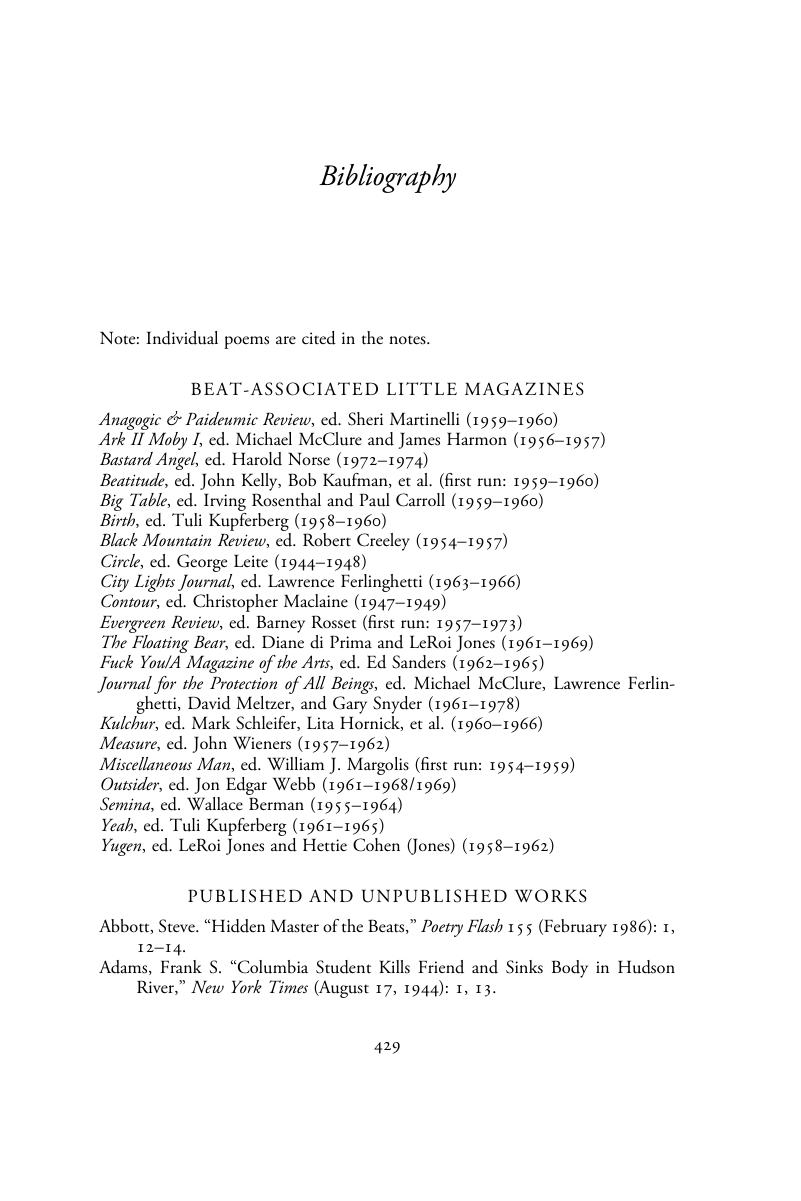Book contents
- The Beats
- The Beats
- Copyright page
- Epigraph
- Contents
- Figures
- Preface
- Acknowledgments
- Part I Get Hip, My Soul: How It All Got Started (1944–1948)
- Part II Underground to Literary Celebrity (1948–1957)
- Part III The Beatnik Era and the Profusion of Beat Literature (1958–1962)
- Part IV Beat Politics (1962–1969)
- Coda
- Notes
- Bibliography
- Index
- References
Bibliography
Published online by Cambridge University Press: 20 February 2020
- The Beats
- The Beats
- Copyright page
- Epigraph
- Contents
- Figures
- Preface
- Acknowledgments
- Part I Get Hip, My Soul: How It All Got Started (1944–1948)
- Part II Underground to Literary Celebrity (1948–1957)
- Part III The Beatnik Era and the Profusion of Beat Literature (1958–1962)
- Part IV Beat Politics (1962–1969)
- Coda
- Notes
- Bibliography
- Index
- References
Summary

- Type
- Chapter
- Information
- The BeatsA Literary History, pp. 429 - 452Publisher: Cambridge University PressPrint publication year: 2020



